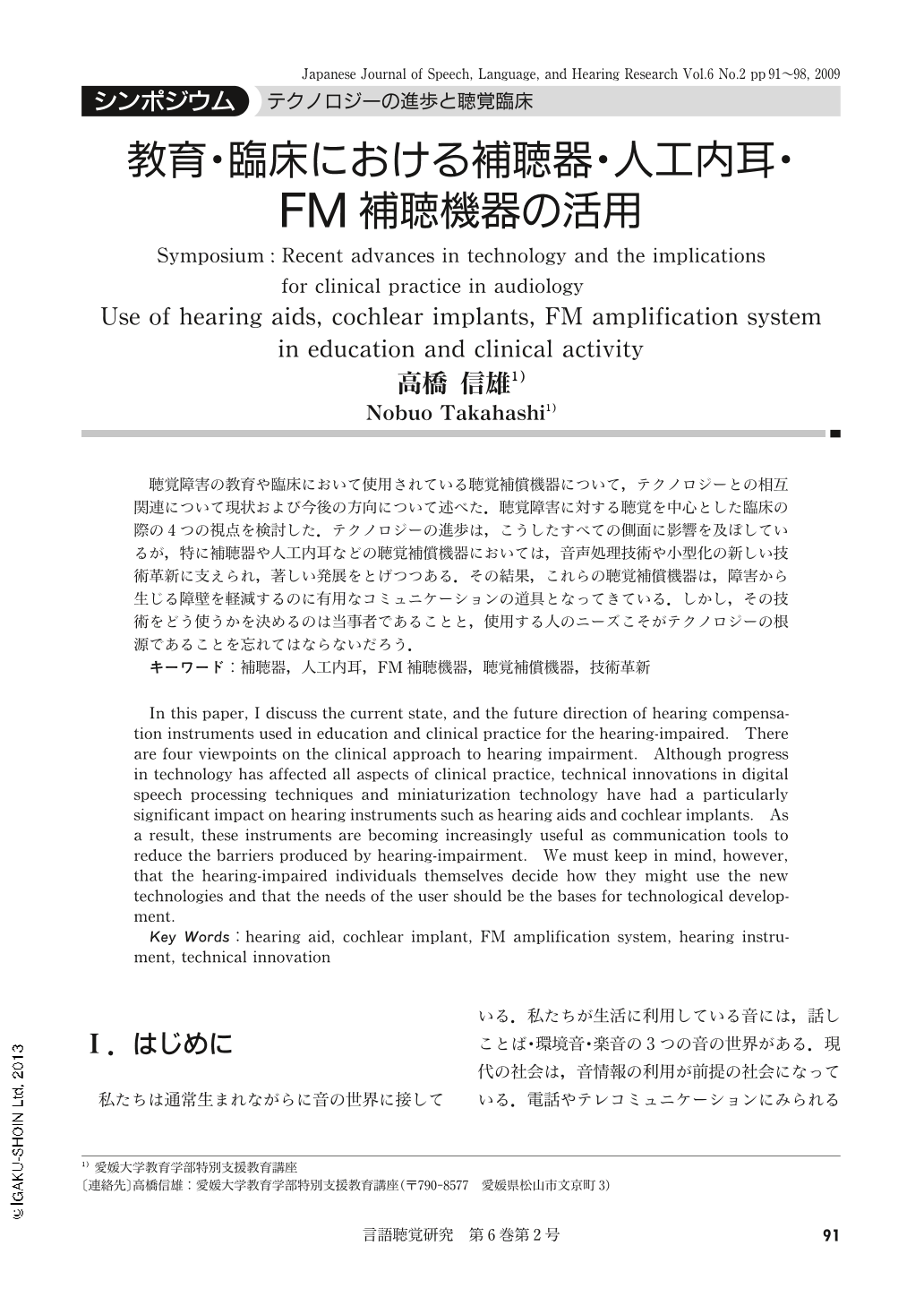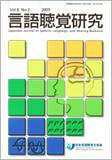Japanese
English
- 有料閲覧
- Abstract 文献概要
- 1ページ目 Look Inside
- 参考文献 Reference
聴覚障害の教育や臨床において使用されている聴覚補償機器について,テクノロジーとの相互関連について現状および今後の方向について述べた.聴覚障害に対する聴覚を中心とした臨床の際の4つの視点を検討した.テクノロジーの進歩は,こうしたすべての側面に影響を及ぼしているが,特に補聴器や人工内耳などの聴覚補償機器においては,音声処理技術や小型化の新しい技術革新に支えられ,著しい発展をとげつつある.その結果,これらの聴覚補償機器は,障害から生じる障壁を軽減するのに有用なコミュニケーションの道具となってきている.しかし,その技術をどう使うかを決めるのは当事者であることと,使用する人のニーズこそがテクノロジーの根源であることを忘れてはならないだろう.
In this paper, I discuss the current state, and the future direction of hearing compensation instruments used in education and clinical practice for the hearing-impaired. There are four viewpoints on the clinical approach to hearing impairment. Although progress in technology has affected all aspects of clinical practice, technical innovations in digital speech processing techniques and miniaturization technology have had a particularly significant impact on hearing instruments such as hearing aids and cochlear implants. As a result, these instruments are becoming increasingly useful as communication tools to reduce the barriers produced by hearing-impairment. We must keep in mind, however, that the hearing-impaired individuals themselves decide how they might use the new technologies and that the needs of the user should be the bases for technological development.

Copyright © 2009, Japanese Association of Speech-Language-Hearing Therapists. All rights reserved.


